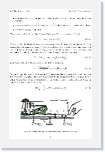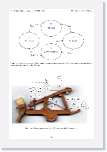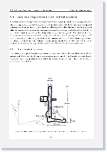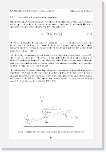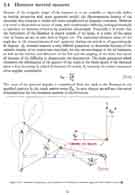The inner piano constituents The physics of intern tiny piano components situated just some inches beyond the visible part of the keys of the grand piano are analyzed
Physics parameters to take into account in order to understand piano action functionement are divided in two branches, namely inertial-static magnitudes, and dynamical related parameters. These magnitudes do vary from key to key in a characteristic pattern, they influence remarkably the comfort of hand touch performance.
These aspects are seen extensively in Chapters 2 and 3
The internal components of every single key of the grand piano keyboard are well known: Tasto (Key), Cavalletto (Wippen Assembly), Spingitore (Jack), Leva di Ripetizione, and Martelletto (Hammer).
Inner Constituents of Piano Action
Abstract
The constituents of grand-piano action are actually over 70 for each key, nevertheless they can be grouped, for static and dynamical analyses, in five “rigid“ bodies, so-called kinetic elements. Geometric fundamental magnitudes and largenesses of such five rigid bodies are essential to calculate and characterize the functionality of the action. In particular the parametric expressions of their inertia of mass momenta must be derived, as logical entities to introduce in the algorithm used for the dynamics analysis. Initial conditions and kinematic restrictions of the system components must be also stated from these magnitudes.
To calculate in approximate way the inertia moment, the body hangs to a thin thread making it to oscillate, if the point of attachment of the thread corresponds nearly to its center of mass1 the oscillations will be similar to those of simple pendulum and the moment of inertia around to the fulcrum is obtained with the well known prostaferesi equation:
![]() in which m is the body’s mass, g the gravity constant, and l the fulcrum-center of mass distance.
in which m is the body’s mass, g the gravity constant, and l the fulcrum-center of mass distance.
The oscillations are then chronometer computed and numbered, in such a way the period of oscillation T can be determined with sufficient accuracy.
The second moment of inertia, around the respective centers of mass, are then estimated applying the Parallel Axis theorem: ![]()
In the following sections are examined the 5 main rigid bodies of piano action, with a resume of their essentials and relative links to the final document:
1 The Key. Key is the only visible part of the mechanism, from the outside we see white and black keys. What is the difference on keys apart from their length and color, inside the instrument?
There are�physical parameters in key balancing of outstanding relevance for the comfort at playing on any key, namely two mass moment of inertia and a dynamical breakdown treshold. The physical model considers a reference key which represent all needed parameters of its intrinsic characteristics. From the slope of S. Birkett:
![]() which describes the degree of dynamic sensibility of the Key to the variations in the force of activation, the model describes the physical conditions for optimal balancing. Read more about reference-key properties on the slide presentation from page 11 to page 25:
which describes the degree of dynamic sensibility of the Key to the variations in the force of activation, the model describes the physical conditions for optimal balancing. Read more about reference-key properties on the slide presentation from page 11 to page 25:
2 The Wippen Assembly.The Wippen Assembly is for sure the most (apparently) complicated body of the piano action.
This model proposes
significant Wippen characterizations including:
- The role of wippen assembly in the Controlled Sequencer Mechanism (or finite state machine) including its pointer parameters of functionality.
- The wippen assemby acoustic impedance.
The Wippen assembly is a shunt distributor of angular momentum and it is compossed of 3 types of material. Its wood skeleton possesses 3 axis points, one of self turning and two for assembling elements; in my model the skeleton is compossed of 16 subareas spread in a 2-dimension pattern. Once the other two bodies (Jack and Repetition Lever) are assembled on their respectives axis the Wippen is complete, and its dynamical functionement is described by means of several mechanical parameters through the thesis:
3 The Jack. The Jack is the smallest rigid body of piano action. Capital "L" shape is perfect to perform two functions, namely stop the Wippen turning at the end of its race, and push the Hammer knuckle to start its fly towards the string.
The relationship between the masses of theWippen and the Jack is of approximately 1 to 6. For the robotics analyses of piano action the model uses a two dimensional sketch of the Jack:
4 The Repetition Lever. The Repetition Lever is an auxiliary component of piano action, embeebed in the Wippen with a precisse function.
The Lever does prepare an overall mechanical configuration for the Hammer second scapement, catching up its knuckle instead of letting it to fall down to the rest position. Jack and Repetition Lever however do not have the same dynamic importance in the transfer of the impulse.
5 The Hammer. The Hammer is the "voice" performer, and the "memory-carrier" of intentional gesture element in piano action, it is a central argument of several scientific research projects worldwide.
No need to mention the Hammer is the most difficult rigid body of the mechanism to model because of its physical characteristics of materials and irregular geometrical shape. The elastic caracterization of the felt has been investigated since many years.

